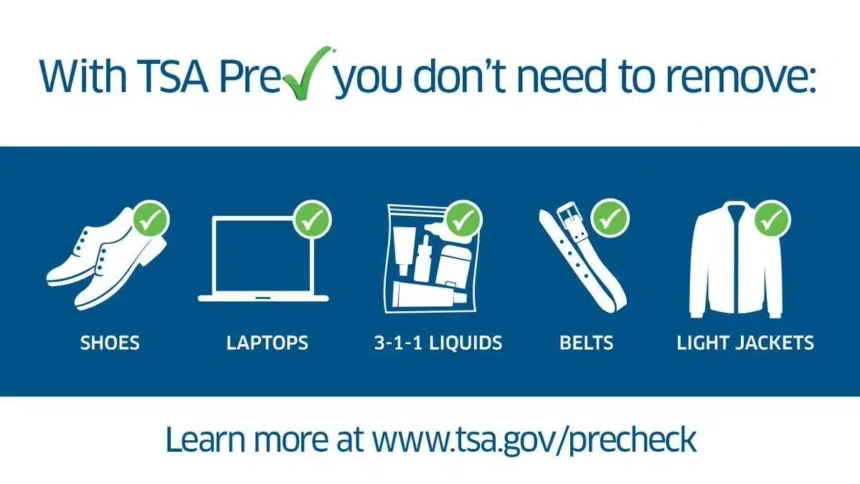Dreading long lines at the airport? You’re not alone – especially these days with travel ramping up for spring break and summer after that. Luckily, there’s a pair of government programs you can enroll in to help skip the lines and long wait times: TSA PreCheck and Global Entry.
These time-saving programs are a key way to improve – and drastically speed up – your travels. They’re fairly cheap for five-year memberships, with a handful of ways to cover the entire cost and make them free. But they have very different purposes. And as you’ll see, one of these security programs has a significant edge over the other.
So we’ll walk through the basics of both programs and give you the pros and cons of each. It should help you decide which is better for you: Global Entry or TSA PreCheck?
The Basics of Both Programs
TSA PreCheck and Global Entry are your ticket to get through the airport faster. But just which area of the airport each program covers is where they’re different.
TSA PreCheck gets you through that airport security line and to your flight quicker. Meanwhile, Global Entry is a must for international travelers, helping you speed through immigration when you return to the United States. But here’s the thing: A Global Entry membership also includes TSA PreCheck benefits for free.
Both programs have separate application processes that require a background check, and can take a few weeks (and in some cases, months) to get approved.
TSA PreCheck itself costs $78 for a five-year membership, while Global Entry is up to $120 for the same period – and unfortunately, you won’t get a discount on Global Entry if you’re already enrolled in TSA PreCheck.
TSA PreCheck Overview
It’s not just the shorter line that makes TSA PreCheck so valuable for travelers. You also get to leave your shoes, belt, and light jackets on. Your laptop and the carry-on approved liquids in your bag can also stay put as you put them through the baggage screeners.
After your first time using TSA PreCheck, you’ll wonder why you didn’t join the program sooner.
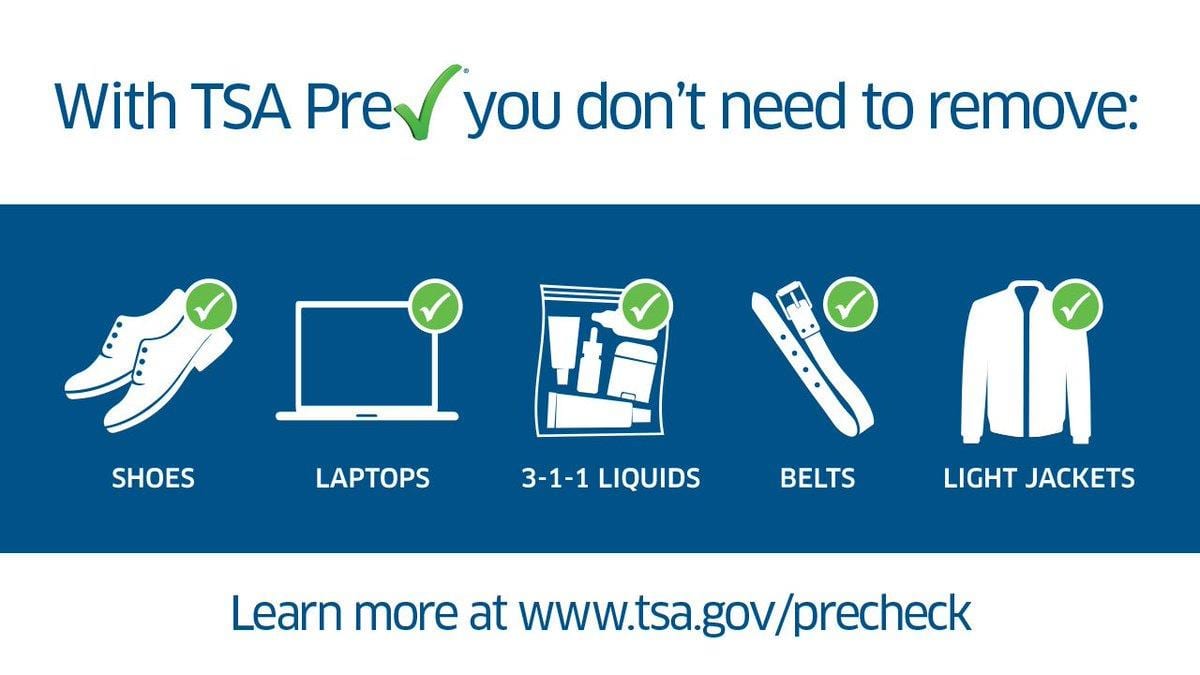
One catch is that TSA PreCheck only partners with specific airlines, so depending on who you’re flying with, there’s a chance you won’t get that quick pass through security. However, all of the major domestic airlines and even many small U.S. carriers are included – and more international airlines are joining the program each year. All told, more than 90 airlines currently participate in TSA PreCheck.
Signing up for TSA PreCheck is pretty straightforward. You’ll fill out a quick application and pay the fee. From there, you will head to a certified enrollment center for a short interview (be sure to bring an ID!), fingerprinting, and a photo. If everything checks out, you should get your Known Traveler Number (KTN) within a week or two … and usually much sooner.
After you’ve been approved, you’ll want to make sure to add your new KTN to your airline profile or enter it when booking a flight to get TSA PreCheck on your boarding pass. That’s the key to taking advantage of these benefits.
Thrifty Tip: Don’t see the PreCheck logo on your boarding pass when it should be? DM your airline and see if they can sort it out for you!
Read up on other reasons why you might not get TSA PreCheck!
Global Entry Overview
Global Entry is a two-for-one: a fast-pass through immigration when you re-enter the United States and membership in the TSA PreCheck program, too.
Aside from the extra $40 or so it’ll cost you every five years, getting Global Entry isn’t much different than TSA PreCheck. Applying is straightforward, and the interview is a breeze as long as you don’t have a criminal record … at least on paper. But in practice, it can take much longer to get Global Entry.
For years, travelers have complained about drawn-out application processes that take months or more, with a long delay to get conditional approval and tough luck securing a final interview to finish up enrollment. More recently, though, things seem to have sped up, with some travelers finalizing Global Entry from start to finish in two weeks – or less.
Read our full guide on getting signed up for Global Entry, from start to finish.
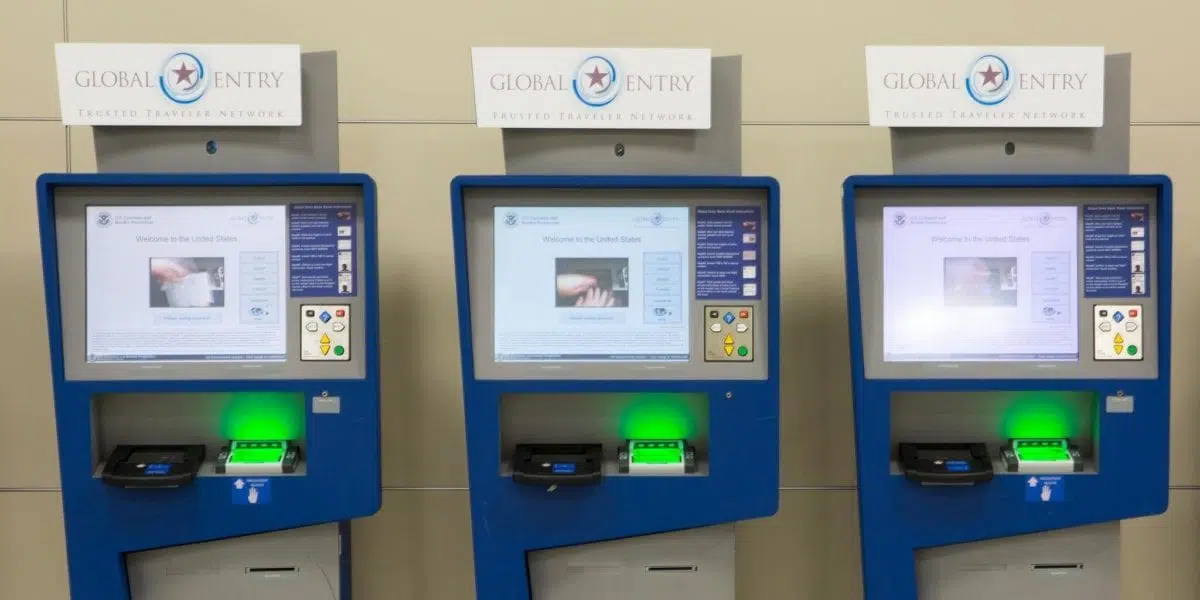
Still, there’s no question that getting Global Entry can take much longer than PreCheck. First, you need to get conditionally approved after submitting your application. While some travelers get the go-ahead within days, others can get stuck in limbo for months.
And the last step, an in-person interview, can be a bit of a headache to actually schedule. Depending on where you live, it can take weeks – if not months – to land a spot at a nearby airport.
Read our guide with tips to schedule your Global Entry interview faster.
Luckily, there’s an easy workaround for that long interview delay. It’s called Enrollment on Arrival, and it allows you to finalize your Global Entry registration while clearing immigration at select U.S. airports when returning to the country.
Seeing as Global Entry is just $42 more every five years, it’s an easy choice over TSA PreCheck alone if you’re hoping to do any international travel. Just make sure you plan ahead, as you may miss out if you try to get signed up right before a big international trip. Once you have it, you’ll get through immigration in minutes.
What About Other Options?
TSA PreCheck and Global Entry are the two best-known airport programs, but there are some other options.
Among them is CLEAR® Plus, an independent trusted traveler program involving both fingerprints and a retinal scan. You can enroll online and finalize your membership at the airport.
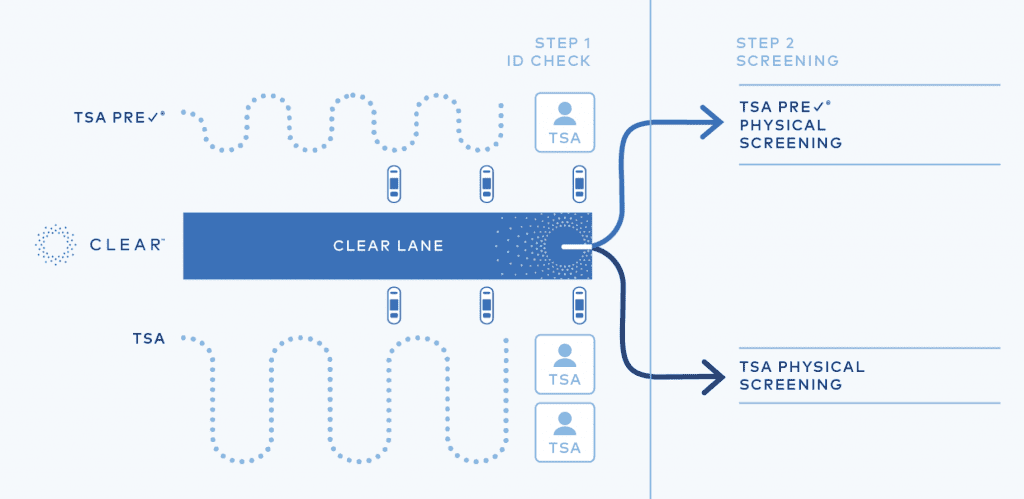
Unlike the five-year memberships for the government-run programs, CLEAR® Plus costs $199 each year, so it’s not exactly cheap. Luckily, there are some easy ways to cut down that price tag considerably – including a way to cover that entire cost with annual credits on *amex platinum*, among other cards.
Read more: Want CLEAR? These 3 Cards Will Cover the Cost
While they may seem duplicative, CLEAR® Plus actually works in conjunction with TSA PreCheck. Once you have CLEAR® Plus, you can simply cut to the front of the PreCheck line and go right through security. Without PreCheck, CLEAR® Plus gets you to the front of the standard line.
The big downside with CLEAR is that, as more and more Americans have signed up, long lines have formed in CLEAR kiosks at airports around the country. In some cases, this has lead to longer waits than even the normal PreCheck lanes. To make matters worse, CLEAR members are regularly being subjected to random ID checks, negating the service’s major selling point of speedy, touchless travel.
If there’s a saving grace, our firsthand look at CLEAR’s new Lane of the Future EnVe pods shows the screening process is getting much quicker. As these roll out to more airports over the course of the year, it should help relieve some of the bottleneck that’s frustrating travelers.
Read our review of CLEAR and whether it’s worth it!
There’s also a free smartphone app that, like Global Entry, can help you get through immigration faster: Mobile Passport Control.
There’s no cost to download it and no ongoing fee. You just enter your passport information, snap a selfie and then enter your trip details when you’re ready to re-enter the country. This replaces that standard paper declarations form and gets you in a dedicated lane to get through immigration quicker.
It’s available on both the Apple Store and Google Play for Android users, too.
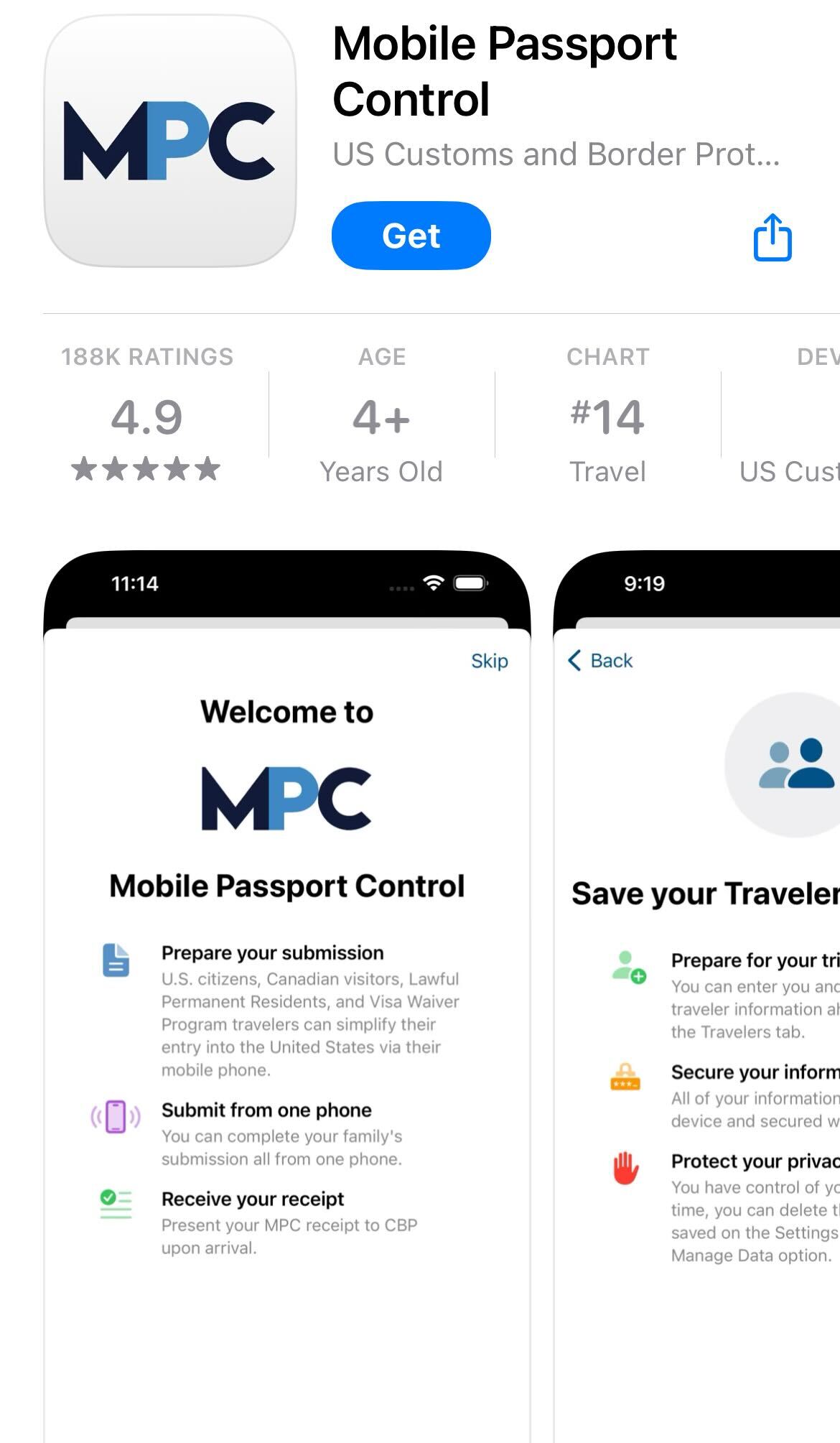
Some travelers swear Mobile Passport Control get you through immigration faster than Global Entry. In my experience, it’s not quite that fast. But it certainly beats the normal lines that get backed up.
While it’s not available at every U.S. airport, you can use it at most of the major international gateways.
How to Cover the Cost of Enrollment
A growing number of credit cards offer a credit that will cover the cost of your application for either program. There are top-dollar premium travel cards like the *chase sapphire reserve* and *amex platinum*, which also carry a host of other travel benefits. The newer *venture x* has the same credit, too.
But even some cheaper cards like the *capital one venture card*, which carries an annual fee of just $95 a year, has a credit that will cover your application. So does the *united explorer*, which has an annual fee of $95 that is waived in the first year.
These credits are typically available to use once every four (or four-and-a-half) years. Considering membership in either program lasts for five years, you’re set.
Thrifty Tip: Already have PreCheck or Global Entry? Use your credit to cover a friend or relative’s application – just pay with your card!
FAQs
Which is better?
If you travel internationally at all, Global Entry is definitely the winner as it will allow you to speed through immigration on your return to the U.S. Plus Global Entry also includes a TSA PreCheck membership.
But Global Entry is slightly more expensive, at $120 for a five-year membership as compared to $78 for TSA PreCheck. And the enrollment process for Global Entry can take much longer than TSA PreCheck.
Can family members come with me for free?
It depends.
Children 17 and younger traveling with an adult who has TSA PreCheck are allowed to accompany their parents through the PreCheck lane. And in some cases, an airline may pass down PreCheck benefits to other adults booked on the same reservation as an adult with TSA PreCheck, but that is hit or miss.
With Global Entry, children under 18 are free if their parent or guardian is enrolled. However, minors still need to apply and be approved separately for Global Entry in order to do so.
How much do each cost?
TSA PreCheck currently costs $78 for a five-year membership.
Global Entry currently costs $120 for a five-year membership.
Bottom Line
There’s no better way to speed up your trip through the airport than getting Global Entry or TSA PreCheck. It’s a great time to enroll in one of these programs to improve your future travels.



